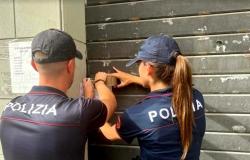In recent days, the video of a song written and performed by the American comedian Marcia Belsky during one of her shows in 2020 has circulated widely again on TikTok and Instagram. The performance was called “Proof that NASA knows nothing about women” and was reference to the story of astronaut Sally Ride, the first American woman to go into space in 1983 and the third in history (two Soviet cosmonauts had gone before her: Valentina Tereškova and Svetlana Savickaja).
«Do you remember that time NASA sent a woman into space for just six days and gave her one hundred tampons? One hundred tampons! », She sings the song: «And she asked her “will they be enough?”, Because they didn’t know if they would be enough. And these are the greatest minds in our country.”
One hundred pads is an excessive number for six days (even assuming a heavy and longer than average menstrual flow, it would mean more than 16 pads a day, one every hour and a half). In his song Belsky makes fun of the fact that NASA scientists, therefore among the best in the world, knew so little about menstruation that they were unable to make such a banal assessment.
Belsky’s song went viral then and returns cyclically because it is very catchy and actually makes you laugh in the way it confirms the awareness – which has spread in recent years with a greater penetration of feminist thought in society – that much of what concerns women is culturally treated as something marginal, even when it comes to expeditions into space.
Belsky said he discovered this story from an article published on Vox which in turn cited a long profile written by journalist Ann Friedman and titled “Astronaut Sally Ride and the Burden of Being First.” Friedman says Ride, who died in 2012, hadn’t always wanted to be an astronaut. She was working as an astrophysics researcher when NASA started a program that aimed to recruit female astronauts to somewhat compensate for the fact that until then only men had always been admitted. Six women were admitted into the 1978 class of recruits, including Ride.
– Read also: The whole story of Sally Ride
When it was time to send Ride into space on Space Shuttle 7 in 1983, however, NASA had to think about some precautions: for example, why a woman could not use the devices that men used to pee without gravity, and precisely why until then the problem of menstruation had not arisen.
The article states that NASA engineers asked Ride: “Is one hundred a good number?” She, who would have been in space for less than a week, replied no, that half would have been more than enough. Belsky said that story seemed extremely funny to her because “the only thing I know about NASA space missions is that they’re extremely selective about what they take on board, but like, they count the grams. Like you can’t wear an extra pair of socks.”
This story, however, has an explanation. In a long 2010 interview, Margaret Rhea Seddon, who at the time was NASA’s only female astronaut, doctor and class of 1978, said that she had participated in the discussion about providing sanitary pads for Ride and that she was among those who insisted on abound. Seddon said he reasoned from the worst possible scenario because at the time nothing was known about what menstruation might be like in zero gravity.
«Many people had hypothesized a retrograde flow, and that the blood could have gone into the abdomen, causing peritonitis (a serious inflammation of the abdominal membrane, ed), and other horrible things.” At the time, however, the astronauts did not appear very worried, claiming that they would deal with the problem when it arose. Seddon said he didn’t remember who was the first astronaut to actually menstruate in space, but he remembered well that when she returned to earth she reassured everyone that nothing had changed.
– Read also: In space your blood can turn backwards
He said he didn’t remember exactly how many pads they ended up giving Ride, but between inside and outside it was “probably at least double what a woman would use, and then we probably added another 50 percent just to be safe.” She had interviewed a few colleagues asking them how many they would use if they had very heavy bleeding for seven days in a row: most of the women she spoke to told her however that they would “never, ever” be able to use so many . But she insisted that it would still be better to play it safe and not have to worry about not having enough once they left. The men didn’t hold back a few complaints when they saw how cumbersome they were.
In a 2022 video, the Italian astronaut Samantha Cristoforetti said that in space menstruation is managed exactly as it would be done on Earth, with internal or external sanitary pads of which there is ample supply. However, she added that astronauts must be careful because pee in space is usually “recycled” with a filter system that does not work as well in the case of pee with blood residues. Perhaps this is also why today most astronauts prefer to use hormonal contraceptives or intrauterine devices (the so-called contraceptive coil) which completely eliminate menstruation.
– Read also: Can you, by choice, eliminate menstruation?





